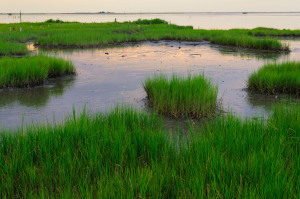Wetlands slow and absorb water, making them critical for flood control as extreme weather becomes more common. Slow down and absorb this:

Wetlands are the speed bumps of water systems. (via US EPA)
Wetlands were once seen as boggy, buggy swamps with no value. Many were filled in and paved over to make room for new development. William Coon, a hydrologist with the US Geological Survey, says today we know better.
Coon: “They allow for the water in the system to spread out, to slow down.”
The more it rains, the more critical it is to have wetlands to slow and store water and to filter pollutants. And since climate change is predicted to bring more extreme rain events to the Northeast and Midwest, wetlands will be a critical line of defense.
So preserving them is more important than ever as we brace for the wild weather coming our way.
Get Schooled:
- Read more about the wetlands in New York State from this DEC site
- Learn more about the world’s wetlands here
- Discover more about the importance of wetlands in this factsheet by the US EPA
- Read about the functions of wetlands in this factsheet by the US EPA
- Soak up this information about climate change and downpours, from the National Climate Assessment.
The Fine Print:
- This segment was produced with Cornell’s Atkinson Center for a Sustainable Future, and supported by agreement with New York Sea Grant, funds provided by the Environmental Protection Fund under the authority of the New York Ocean and Great Lakes Ecosystem Conservation Act. Any opinions, findings, conclusions or recommendations expressed in this broadcast are those of the originators and do not necessarily reflect the views of Stony Brook University or New York Sea Grant.




